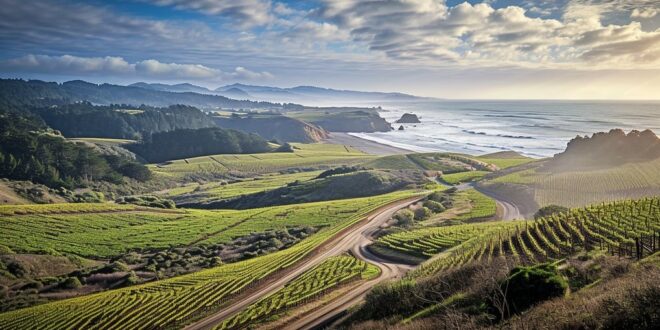Some places make you pick: culture or coastline, food or history, wine or views. But then there are the sweet spots — where ruins sit just above the surf, where a hillside vineyard spills toward the sea, where history and hedonism don’t fight each other. They flow together.
This is about six routes that do exactly that. Spots where you can walk through a 2,000-year-old temple in the morning, sip something local in the afternoon, and swim before dinner.
No need to overthink it. Just good travel, the kind that sticks with you.
Let’s go.
1. Southern Sicily — Ruins, Nero d’Avola, and Baroque Towns by the Sea
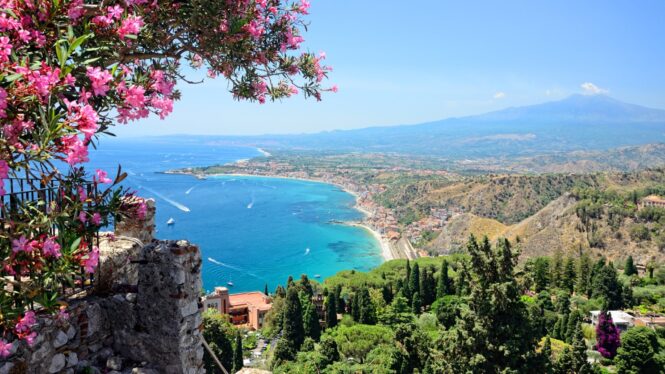
The southeast corner of Sicily has a kind of faded grandeur to it. Temples, crumbling theaters, and baroque towns where nothing moves too fast — except maybe the espresso machine.
Where to go:
- Syracuse: The ancient Greek theater is still standing. Still used. That alone makes it worth a stop.
- Noto: Warm-colored stone, wide avenues, gelato served in brioche. It’s too much, in the best way.
- Ragusa & Modica: The kind of towns where you’ll take a wrong turn and end up in someone’s garden with a view over an olive grove.
The wine here is mostly bold reds — Nero d’Avola’s the big name. If you want a cellar with a view, try Feudo Maccari or Gulfi.
The coastline isn’t flashy, but it’s clean, calm, and incredibly easy to fall in love with. Calamosche beach is a good pick if you want a quiet cove. Marzamemi is great for seafood and a slow dinner.
2. The Peloponnese, Greece — Myth, Mountains, and Sea-Air Reds
Not a lot of first-timers head to the Peloponnese. That’s a mistake.
This part of southern Greece is stacked with ancient sites — think Mycenae, Epidaurus, Ancient Corinth — but also dotted with vineyards and low-key coastal towns that don’t scream for attention.
A rough loop:
- Start near Corinth, then head south through Nemea (great wine country), into Nafplio for the sea, and if you have time, swing out toward Monemvasia.
The red grape Agiorgitiko is everywhere around Nemea. It’s plush, dark, and usually good even from small producers. No snobbery here — most places will let you taste a few bottles and talk to the winemaker’s uncle about goats or local football.
The coastline? Understated. More cliff and cove than big beach. But the water is that crystal-clear kind that makes you forget to check your phone for hours.
3. Split to Korčula, Croatia — Roman Walls, Island Wines, and Stone Beaches
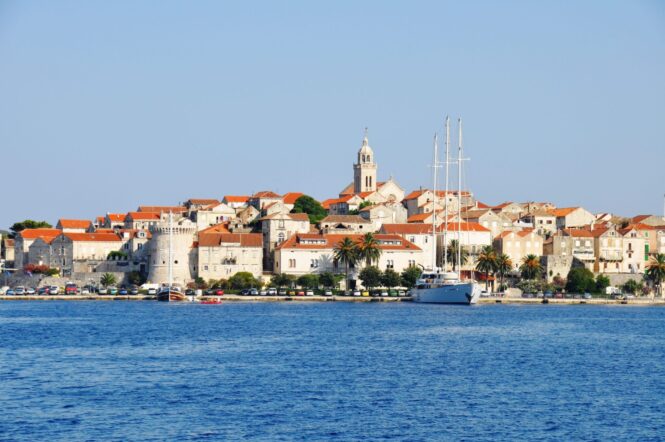
Split is one of those cities that gets better the longer you stay. The old Roman palace there isn’t fenced off — it is the city center. You walk through 1,700 years of history just looking for coffee.
From Split, head down the coast, or better yet — hop a ferry.
Stop suggestions:
- Hvar if you want a bit more buzz and nightlife.
- Korčula if you’re after something slower, with cobbled streets and local whites you’ve never heard of but won’t forget.
The wine in this region is underrated. People talk about Italy and France, but Croatia’s been making wine since before there was a Croatia. Look for Pošip (white), Plavac Mali (red), or the occasional orange wine aged in amphora if you’re feeling adventurous.
The coast here is unreal. Rocky, clear, and full of swimming spots that feel like someone’s secret — even when they’re not.
4. Malta & Gozo — Megaliths, Sea Salt, and Island Wines That Punch Above Their Weight
Malta’s small. You can drive from one end to the other in under an hour. But don’t let the size fool you — it’s dense with stories, stone, and sun.
The megalithic temples are older than the pyramids. You can walk through Hagar Qim and Mnajdra while looking out over the sea. No crowds. No noise. Just wind and stone.
Valletta’s got bars tucked into old limestone bunkers, rooftops with cannon views, and wine lists that finally give local bottles some space. Meridiana is one name to know, but honestly? Just order the house wine and see what shows up.
Hop over to Gozo for a change of pace — slower roads, higher cliffs, fewer people. And if you want to really take it all in without dealing with buses or crowds, it’s worth looking at a private boat option. You get the open water, the breeze, and your own pace you can learn more here.
5. Languedoc, France — Roman Roads, Oyster Villages, and Wines Without the Hype
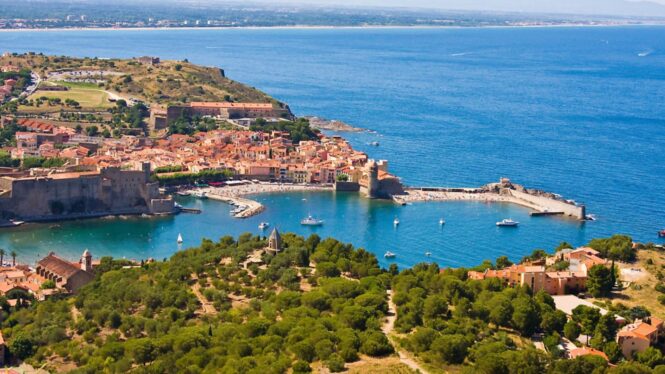
Everyone talks about Provence. Fewer people talk about Languedoc. Which is good, honestly.
This stretch of southern France is loaded with Roman stuff — actual amphitheaters in Nîmes, aqueducts, old roads. It’s also where you can slurp oysters right next to the guy who farmed them.
Start in:
- Béziers or Montpellier, move along the coast through Sète, Marseillan, and into the hills if you want to find some proper vineyard air.
White wines dominate here, especially around Picpoul de Pinet — crisp, dry, and made to go with seafood. Mas de Daumas Gassac is worth a visit if you like wines with a cult following and don’t mind some gravel roads.
The beaches are long and often empty if you go in the shoulder season. You can find your own stretch, pop a bottle, and just watch the horizon.
6. Lisbon to the Alentejo Coast, Portugal — Temples, Reds, and Wild Atlantic Edge
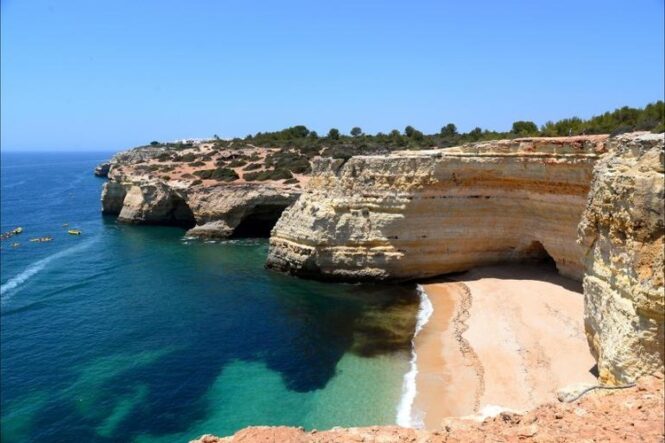
Lisbon’s easy to love — steep streets, sardines, tiled buildings, all of it. But once you head east into Alentejo, it gets quieter and older, fast.
Must-stops:
- Évora — Roman temple, bone chapel, and slow-as-molasses afternoons.
- Then swing southwest toward Vila Nova de Milfontes, Zambujeira, or Porto Covo.
The Alentejo region makes some of Portugal’s best reds. They’re rich, full, not too fancy. Alicante Bouschet and Trincadeira are the names to remember if you care. But most of the time, it’s just “tinto” on the menu, and it’ll be great.
The coast out here is dramatic — cliffs, wind, sea spray. Not your gentle, floaty beach vibe, but the kind of place you walk for hours and feel better afterward.
Quick Comparison
Here’s a rough feel for how each route stacks up:
| Route | Ruins | Wine | Coast | Vibe |
| Sicily | Greek & Roman | Big reds | Calm, rocky | Rustic, golden |
| Peloponnese | Mycenaean & Classical | Earthy reds | Small bays | Slow, historical |
| Croatia | Roman | Crisp whites, orange wine | Island spots | Clear water, relaxed |
| Malta | Megalithic | Island blends | Cliffs & coves | Tight, compact, sunny |
| Languedoc | Roman & Medieval | Crisp whites, some reds | Oyster coast | Understated, wild edges |
| Portugal | Roman & Moorish | Strong reds | Wild Atlantic | Windy, soulful |
Some trips are about crossing stuff off a list. Others just pull you in — the kind where you follow the smell of lunch down an alley and end up in a Roman forum or find yourself drinking a local wine with someone who insists their family has been doing it since the Phoenicians.
There’s no perfect route. But if you find one that blends old stones, good grapes, and salty air? You’re in a good place.
Let me know if you want a map for any of these — or if you’re figuring out how to link two of them together. Easy to do, and always worth it.
 Imagup General Magazine 2025
Imagup General Magazine 2025
